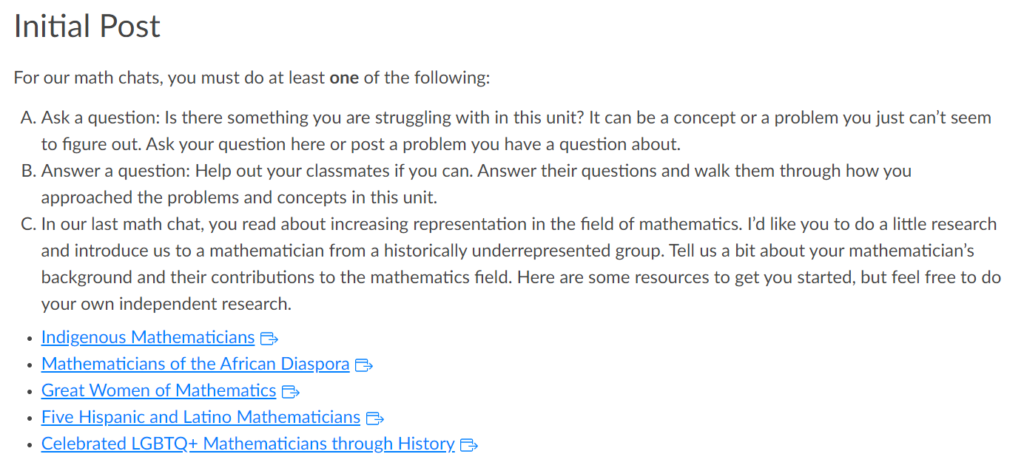Using Informal Chats in a Math Course
Overview
Students collaboratively discuss math problems and explore concepts related to equity, diversity, and inclusion (EDI) in the field of mathematics.
Why Use This?
Math anxiety is reduced when students discuss math and work together to solve problems, which can help them be more successful in the course. Discussing and solving problems with peers has also been shown to increase overall math comprehension. Discussions further provide a space for students to be introduced to and discuss EDI concepts that relate to the field of mathematics.
How Does It Work?
At the end of each unit, students are asked to participate in a “math chat” discussion in which they do one or more of the following:
- Post a problem they are stuck on or a question they have.
- Solve a problem posted by another student or answer another student’s question.
- Read and reflect on a math-related article or talk about a math-related topic.
In this course, articles pertaining to EDI were curated for two of the math chats. These articles addressed topics such as racial, gender, and time inequities in traditional math education, and how the field of math is adapting to welcome mathematicians from diverse backgrounds. Another math chat invited students to research and post contributions by a mathematician from a historically underrepresented group, such as women, people of color, Indigenous peoples, and LGBTQ+ individuals.

Keep In Mind
- You’ll likely need additional time to curate articles and web resources for your chat prompts.
- Solutions posted by students could be incorrect; instructors should monitor student-posted solutions.
- A “starter post” from the instructor can help foster connections and jump-start the discussion in asynchronous, independent courses.